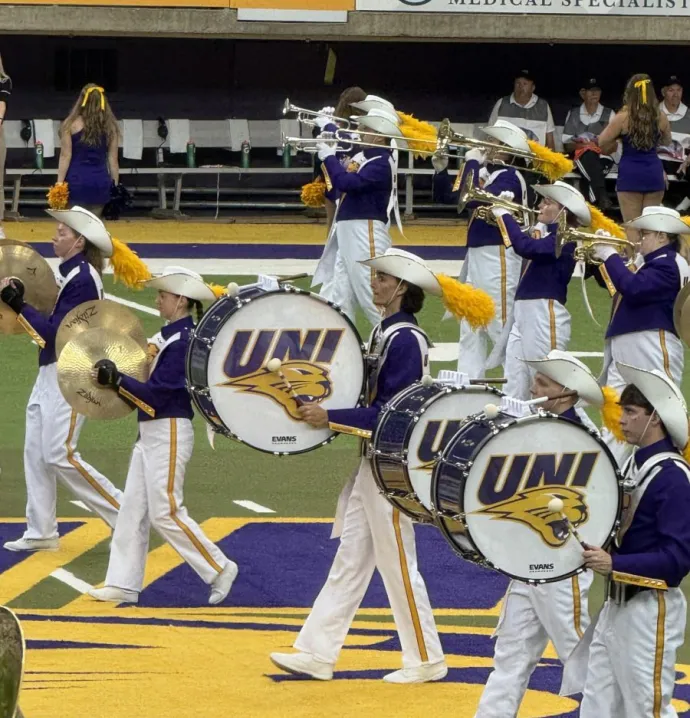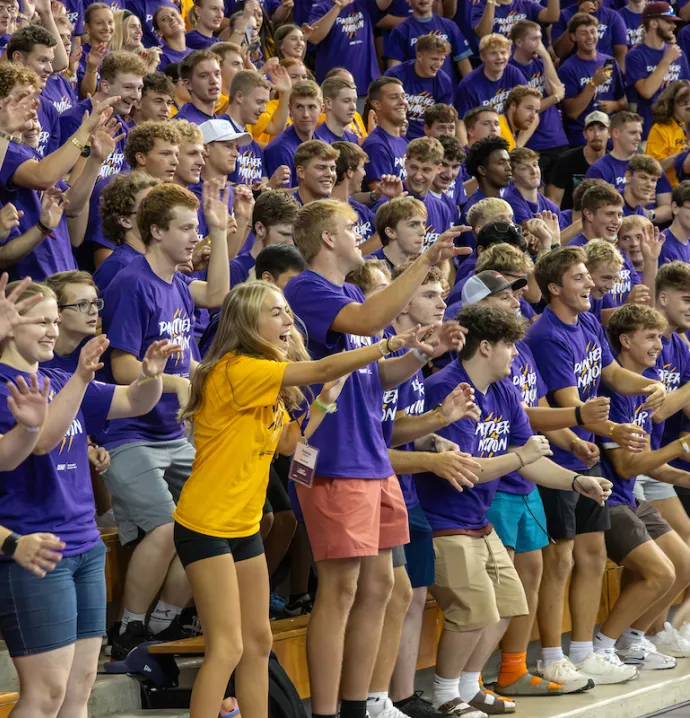A once-in-a-blue moon Halloween
A once-in-a-blue moon Halloween
As if 2020 hasn’t been strange enough, this Halloween will feature an unusual celestial treat - the first worldwide blue moon in 76 years.
While a Halloween blue moon comes once about every 19 years to specific time zones (the Midwest last saw one in 2000), the last truly global blue moon was in 1944, according to the Farmer’s Almanac.
Astronomy professor and department head Siobahn Morgan spoke to InsideUNI about this year’s spooky phenomenon. While the department would typically be welcoming the public to the observatory atop McCollum Hall or the Latham Hall Planetarium, with social-distancing guidelines in place, Morgan is spreading her astronomy knowledge remotely .
Humanity’s endless fascination with the moon is reflected in the wealth of names for lunar phases, she noted. Moons can be blue, black, blood, red, super, hunter, farmer, egg, beaver or harvest. The modern astronomical use of the term “blue moon,” a phrase which has multiple meanings and has been used to name everything from an Elvis Presley song to a Belgian beer brand, is thought to be a recent coinage.
Our lunar obsession has even led astronomers to theorize the existence of “moonmoons” - submoons orbiting larger moons. Researchers have scoured the Solar System, landing on the planet Kepler-1625b, a gas giant with a distant Neptune-sized moon, as “the best-case scenario for a moonmoon.”
What is a blue moon? Is it actually blue?
There a lot of names of things in astronomy that don't make sense and blue moon is one of those names. A blue moon is a full moon that happens twice within one calendar month. Because the time for a full moon to repeat itself is a little more than 29 days, that doesn't always fit in a single calendar month. So the rarity of having it in the early part of the month and again in the late part of the month is why we have the expression ‘once in a blue moon.’
How rare are they?
Blue moons can happen twice in one year, or not at all during a year. It depends upon the alignment of the months with the phases of the moon. And in some years, there may be no blue moons because the moon is full in the middle of the month. Having one on Halloween is like saying when is it going to be a full moon on your birthday. It is a rarity for it to be on a specific day of the year, but not so rare as to be impossible.
What’s the best way to photograph it?
Viewing the moon is a lot easier than photographing it. Because the full moon is especially bright, a cell phone camera would have a hard time seeing any contrast. It may just look like a bright blob. And in fact, it's really hard to focus a telescope on a full moon because there isn't a lot of contrast. So actually astronomers don't really like the full moon. It's so dang bright. It makes everything else kind of washed out.
Any other advice?
If you’re going to be looking at the moon, it's completely safe. You're not going to go crazy, or have any other problems. There’s nothing special about it being on Halloween. And actually, it's relatively small for its size compared to what they call a super moon when it’s closer to the earth. This month, the moon is a little bit further away than average. So it's a little bit smaller than average.




